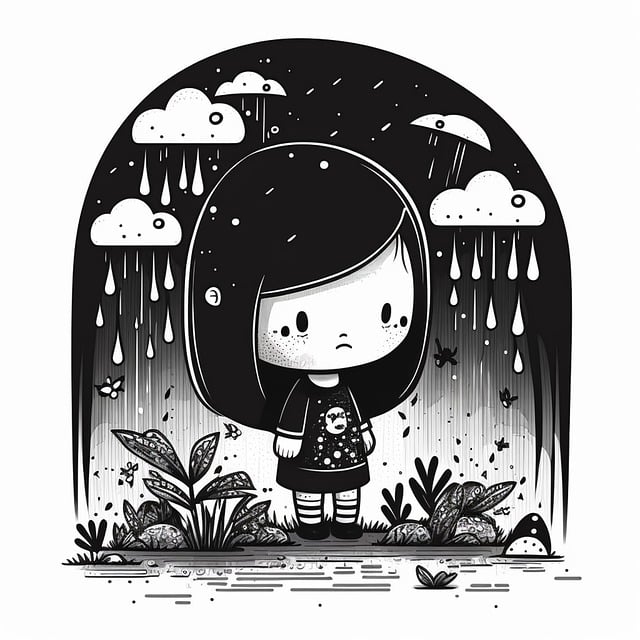Write On! Features: Should Children’s Writing Be Sugar-Coating Their World? By Mary Walsh
By Mary Walsh
Originally published in Write On! Magazine, issue 11
When writing a book for children with a plot involving sensitive issues such as racism, sexual abuse, cruelty, neglect
and death, do you sugar-coat it to make it appear ‘nicer’ or do you portray the world as it is, warts and all?
In the light of some frightening statistics illustrated below about trauma suffered by British children, it seems to be of utmost importance to help young people make sense of their own lives and the situations they face through fictional characters who are also going through traumatic events. However, despite the undeniable coping tools and identification books can offer, there is a movement for covering up the very subjects we most need to touch upon, making them taboo in children’s writing. The reasons behind this range from the religious and ethical via child protection issues and, on the surface, seem perfectly valid.
To explore further, I asked Niamh, 17, Jack, 15 and Evelyn, 12, if they thought fiction for children should come via rose-coloured glasses, or reflect the realities of life.
Niamh
“I think we are surrounded by these things, so why sugar-coat it? Don’t romanticise bad behaviour. Instead, show good behaviour, so that there is a balance. Social media is everywhere, so it is harder to filter what we see.”
Jack
“I don’t think the truth should be covered up or left out. It’s better to know about things and deal with them.”
Evelyn
“Things shouldn’t be left out because they are hard. Harry Potter is full of bullying, death and cruelty. It can help some people learn how to cope.”
As a child, I read Gobbolino The Witch’s Cat by Ursula Moray Williams, a tale about the bullying of Gobbolino because of his one white paw. He is subsequently abandoned by his mother and sister because he is different but he, nonetheless, overcomes all the obstacles he faces. The Chronicles Of Narnia by CS Lewis contain wicked queens who can turn you to stone, a brother who lies, terrible monsters and a place where it’s ‘always Winter and never Christmas,’ and reading The Lion, The Witch And The Wardrobe as a child, has led to my permanent dislike of Turkish Delight. The fairy tales of the Brothers Grimm were never ones to sugar-coat, either: granny-eating wolves, hunters trying to kill princesses and girls being tempted to eat poisoned apples are not exactly wholesome plotlines! However, these classic tales allow children to explore dangerous or sensitive situations through a fantasy environment, in the safety of their own home.
It’s also worth mentioning oral storytelling: with us through the entirety of human history and generally graphic enough to make our hair stand on end. (Icelandic Sagas* don’t just include heroic characters who fight for what’s right, there is also a liberal mix of death, murder, war, child cruelty and abuse!)
In more modern times, Harry Potter brings wonder and fright in equal measure and the Horrible Histories series doesn’t stint on gory details. Most children love a good scare and tales full of blood and battles. These tales are so popular with children precisely because they contain the whole truth, including the grisly details.
As a writer, mother and grandmother, I believe we adults should trust the relationship between authors and their young readers and allow them to make sense of the world together. Publishing is a curated environment, after all. As a caveat, though, I don’t believe the same reasoning should apply to the digital world (even though it’s also filled with words and pictures). This world includes social media and needs very different filters and an entirely more rigorous approach. We need to carefully consider how we present and discuss information children can so readily access.
As writers, we have a difficult task ahead. We must write about these subjects in a way that publishers will find palatable, so that the story remains authentic. To write with a child’s eye, moving the characters to a fantasy world, or showing the lead character battling through tough situations that can occur in everyday life. It’s almost as though we need to sugar-coat it for the adults, while the children deserve the reality!
Snapshot Facts And Figures From The UK:
- ChildLine delivered 19,847 counselling sessions to children in the UK, where abuse was the primary concern (year ending March 2019).
- One in five children in the UK have experienced cyber bullying and one in every four young people have been victims of bullying in the past 12 months.
- Two per cent of girls between 13 and 20 had suffered from nonspecific eating disorders.
(Sources: Nationaleatingdisorders.org, Office of National Statistics and ChildLine.)
How Modern Children’s Writers Have Responded:
- Mud Boy by Sarah Siggs – An illustrated book for ages five and up, telling the story of Sam, whose life is “Like the best piece of music you ever heard” – but changes when he is bullied.
- The Year I Didn’t Eat by Samuel Pollen – The author’s own experience of anorexia.
- Refugee by Alan Gratz – A collection of heart-rending stories from Nazi Germany to Syria, focussing on the plight of refugees.
- The Second Dad Summer by Benjamin Klas – A boy spends summer with his dad and his dad’s new boyfriend, Michael. It explores LGBTQ+ subjects as well as divorce.
*****
Connect with Mary Walsh on X (formerly Twitter): @MaryWal11526731 and Instagram: @marelwa60
*****
Issue 17 of Write On! is out now and you can read it online here. Find it in libraries and other outlets. You can find previous editions of our magazines here.

You can hear great new ideas, creative work and writing tips on Write On! Audio. Find us on all major podcast platforms, including Apple and Google Podcasts and Spotify. Type Pen to Print into your browser and look for our logo, or find us on Podcasters.Spotify.com.
*****
If you or someone you know has been affected by issues covered in our pages, please see the relevant link below for information, advice and support: https://pentoprint.org/about/advice-support/
As a writer, mother and grandmother, I believe we adults should trust the relationship between authors and their young readers and allow them to make sense of the world together.




